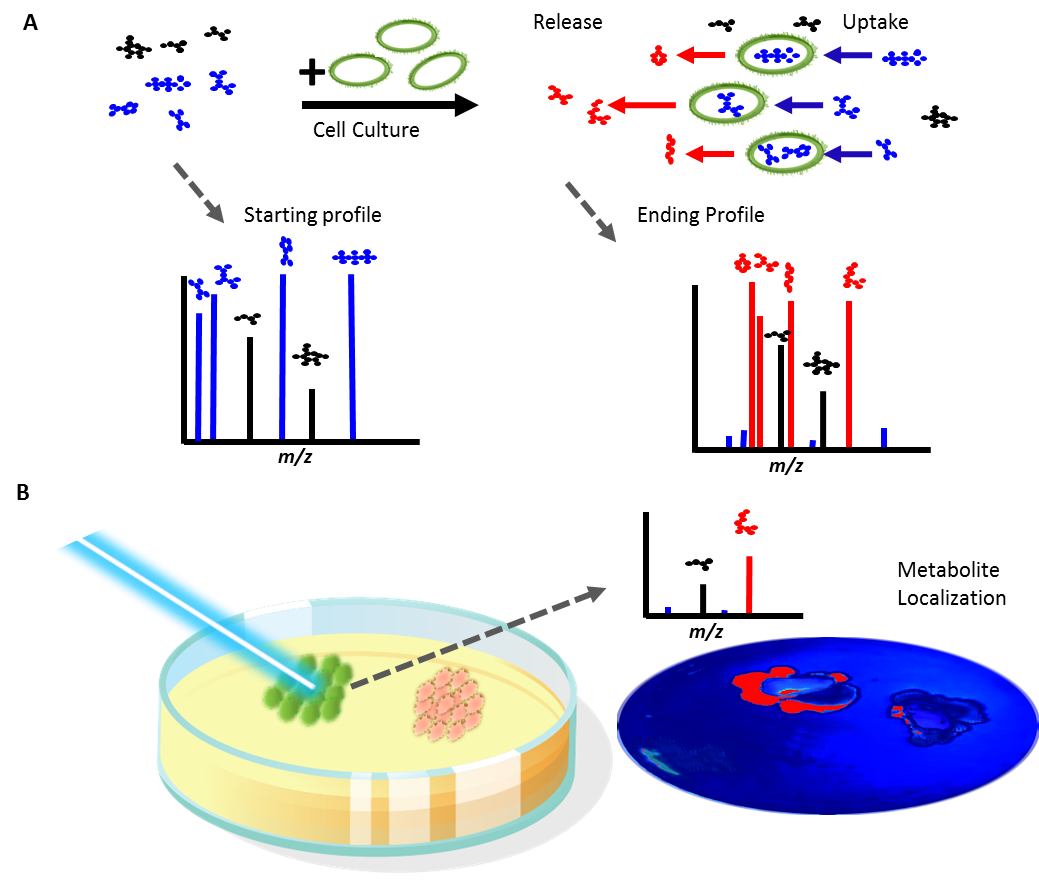In this article we describe the development of a simple soil metabolomics workflow and a novel spike recovery approach for the analysis of soil organic matter (SOM). The cycling of SOM by microorganisms is a critical component of the global carbon cycle but remains poorly understood. There is an emerging view that much of SOM, and especially the dissolved fraction, is composed of small molecules of plant and microbial origin resulting from lysed cells and released metabolites. Unfortunately, little is known about the small molecule composition of soils and how these molecules are cycled (by microbes or plants or by adsorption to mineral surfaces). The water-extractable organic matter (WEOM) fraction is of particular interest given that this is presumably the most biologically-accessible component of SOM.
Gas chromatography/mass spectrometry analysis of soil extracts allowed us to identify over 50 metabolites. As expected, fumigation, which is thought to lyse microbial cells, significantly increased the range and abundance of metabolites relative to unfumigated samples. To assess the types of microbial metabolites from lysed bacterial cells that remain in the WEOM fraction, an extract was prepared from the soil bacterium Pseudomonas stutzerii grown on 13C acetate, spiked into soil and then analyzed for fractional recovery. We found that only 27% of the metabolites showed >50% recovery in the WEOM. Many, especially cations (polyamines) and anions, showed <10% recovery. These represent metabolites that may be inaccessible to microbes in this environment and would be most likely to accumulate as SOM presumably due to binding with minerals and negatively-charged clay particles. This article presents a simple untargeted metabolomics workflow for extractable organic matter and an approach to estimate microbial metabolite availability in soils. These methods are now being used by our laboratory to further our understanding of SOM and DOM composition and examine the link between metabolic pathways and microbial communities to terrestrial carbon cycling.
The journal article can be found here





